Scafell is England's finest cliff and sits at ease alongside the UK's other great mountain bastions such as Creag an Dubh Loch in the Cairngorms and Clogwyn Du'r Arddu in Snowdonia. Scafell has all that is expected of a true mountain crag and its breath-taking mountainscapes, top class routes of all grades and a rich history combine into a sublime climbing experience that is second to none.
Scafell sits high up above the head of the deep and dark lake of Wastwater on the western side of the English Lake District; its adjoining summit of Scafell Pike being England's highest mountain. The climbing on Scafell is split between its east and western ramparts that are divided by a narrow col known as Mickledore. The lofty nature of the view from Mickledore is what gives Scafell the edge over its rivals – the airy position and surround of rock giving a near alpine feel to the terrain.
Bagging even one climb on Scafell is for most a major achievement, the long drive, short but stiff walk-in and notoriously unreliable weather being formidable barriers to success. However don't shy away from the mission - pick a 'hot forecast', pack up the camping kit, prepare for some leg work and the rewards will be a lifetime of great memories born out of the Scafell experience.
Scafell and its Climbs
Scafell has two main faces – the East Buttress and its northwest face known as Scafell Crag.
Scafell Crag is dissected by a number of deeply incised gullies that conveniently divide up the face into five major buttresses. The Central Buttress and Scafell Pinnacle have a pedigree of historic and impeccable climbs that offer many classic multi-pitch routes that are amongst the finest in the UK. This depth of quality is underlined by a far higher than average number of the climbs being featured in the iconic books Classic, Hard and Extreme Rock.
Scafell East Buttress is a bastion of severely overhanging rock and is a more unified cliff than Scafell Crag with little in the way of chinks in its armour. The East Buttress lurches outwards over the wide expanse of Upper Eskdale, which drops away from the airy ridge of Mickledore and is a sobering first sight for any climber.
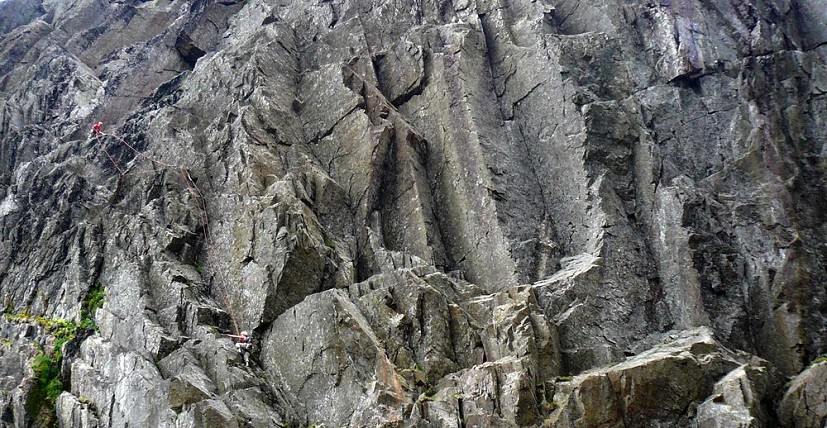
Scafell Crag's finest climbs
Woodhead's Climb (S 4a) (Mild Severe 45m 2 pitches) – Tucked away in some of the UK's most impressive mountain scenery is this early-days gully wall climb. A true mountaineering expedition; just accessing the start is a fine tour of the 'guts' of Scafell.
Hopkinson's Gully (VS 4b)/ Slingsby's Chimney Route (VD) / The Knife-Edge Arete to Jordon Gap (MVS 145m 6 pitches) - One of Scafell's longest and truly great link-ups. The climbing is on superb rock throughout and the upper arête and descent into the Jordon Gap, top what is very possibly England's ultimate mountaineering outing. Although the climbing grade appears to be un-balanced, many find the crux of Slingsby's Chimney Route (VD) (VDiff) to be as tough as the MVS climbing on Hopkinson's Gully (VS 4b) !
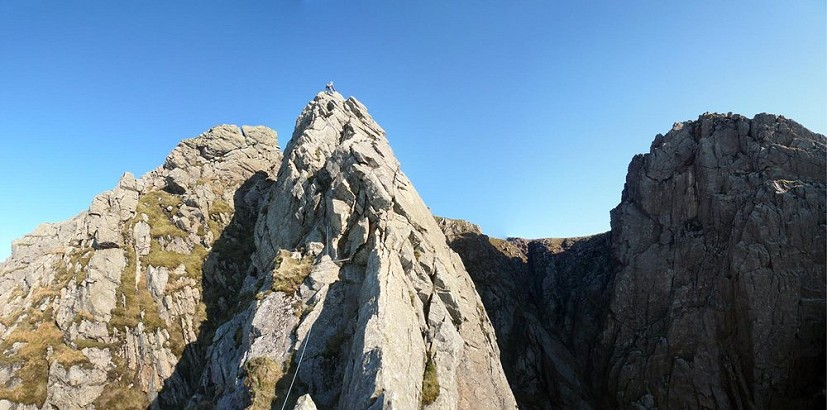
Moss Ghyll Grooves (VS 4c) (MVS 4c 80m 4 pitches) – One of the Lake District's great mid-grade lines and a rarity for the Lakes; a soft touch! The climbing is exquisite and gradually builds in exposure as it wanders out over the sheer wall of Central Buttress, dodging all major difficulties by repeatedly sidestepping into a series of grooves and corners.
Saxon (E2 5c) (E2 5c 120m 3 pitches) – A memorable climb that snakes its way up the blank right-hand side of the Central Buttress. The meat of the line is the middle pitch that features a tricky traverse to the edge of Moss Ghyll grooves and a crucial final crack. The top pitch is sublime.
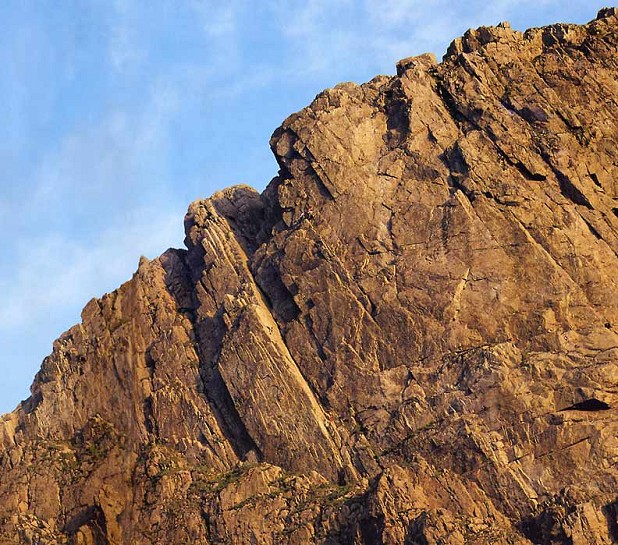
The Nazgul (E3 5c) (E3 5c 84m 4 pitches) – The left-hand side of the tallest section of Central Buttress is ascended by four classics; The White Wizard (E3 5c) E3 – takes a series of short intense pitches up the left margin; Central Buttress (E1 5b) (E1) the first line to breach the face but now not as good since the demise of a large flake. Ringwraith (E6 6b) (E5) – The high standard challenge that unfortunately is rarely clean enough for an onsight attempt. However for my money the finest of them all is The Nazgul which fires up the face via some sustained and varied pitches and culminates in a beautiful final pitch up a couple of offset ramplines.
Botterill's Slab (VS 4c) (VS 4c 87m 3 pitches) – The steep slab that stands proud of the face is a superb although short route. The climbing on its main pitch is a much more intense exercise than that of the nearby Moss Ghyll Grooves but a far steadier proposition than its more ferocious cousins at the grade lurking around the corner on the East Buttress.
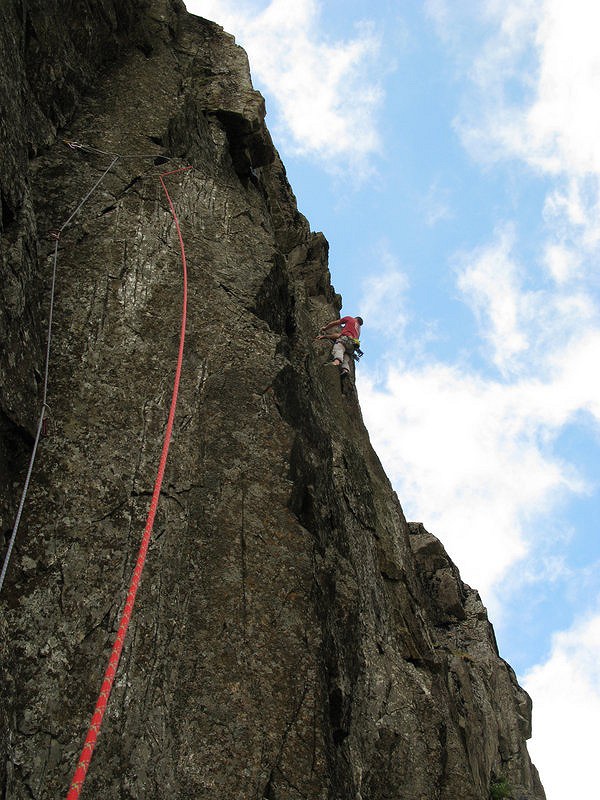
The East Buttress
Mickledore Grooves (VS 5a) (VS 4c 70m 2 pitches) – A fantastic bit of climbing on the friendliest section of the East Buttress. The climb starts with a stiff pull off of the path and continues up corners, slabs and walls with little chance of a break for a breather. One of the better 'short VSs' in the Lake District.
Shere Khan (E5 6a) (E5 6a 72m 3 pitches) – A superb climb on rock that Escher - the illusionary artist - would have been more than proud of. The main pitch is typical of the majority of the climbs on the East Buttress, linking a series of ramps and corners up a rockscape far steeper than a casual glance reveals.
The Centaur (HVS 5a) (HVS 5a 95m 5 pitches) – One of the Lake District's longest and most sustained HVSs. The line weaves its wonderful way up the central mass of the Buttress, the pitches adding up to a great experience rather than one being the stunner.
Great Eastern Route (VS 4c)/ The Yellow Slab (HVS 4c) (HVS 5a 90m 3 pitches) – A magnificent right to left rising traverse of the central portion of the buttress that neatly side-steps all of the major obstacles. A masterpiece of route finding for its time.
Borderline (E7 6c) (E7 6c 55m 2 pitches) – One of the finest of the harder lines in the area. Borderline follows the slim curving flake up the severely overhanging lower walls of the East Buttress and sees few repeats.
Ichabod (E2 5c) (E2 5c 45m 2 pitches) – One of the Lake District's finest pitches that ascends a series of slim corners and thin cracks up the left side of the East Buttress. The line neatly avoids the severely steep ground taken direct by Borderline by climbing a convenient ramp leftwards before the sustained and technical but well protected feast begins.
Hell's Groove (E1 5b) (HVS 5b 65m 4 pitches) – An often-overlooked climb that is tucked away from the other more easily viewed lines on Scafell. The opening pitch gets straight-down to business and opens the way to superb but gradually easing pitches above.
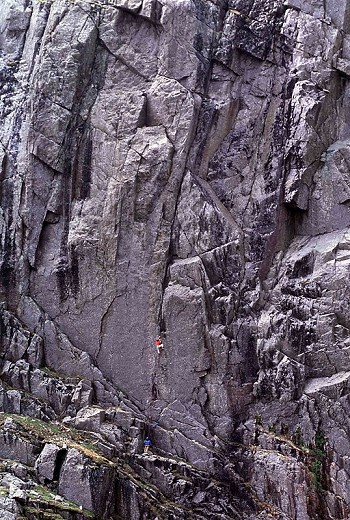
Ten of the most significant periods of Scafell's climbing history
The ascent of Scafell Pinnacle via the Jordan Gap (Mod) and Slingsby's Chimney (VDiff) in the late 1800s were some of England's earliest recorded rock climbs by the likes of W.P Haskett-Smith and W.Cecil Slingsby.
At the very end of the 19th Century the open faces and crack lines such as Jone's Route Direct from Lord's Rake (HS 4b) (HS) by O.G.Jones start to be explored.
Prior to the First World War the major lines of Botterill's Slab (VS 4c) (VS) and Central Buttress (E1 5b) (HVS – now E1) on Scafell crag are conquered by teams headed by F.W.Botterill and S.W.Herford respectively.
The inter-war years see the first routes of significance climbed on the East Buttress – Mickledore Grooves (VS 5a) (VS) by the legendary Colin Kirkus, The Yellow Slab (HVS 4c) (HVS) by Maurice Linnell and May Day Climb (HVS 5b) (E1) by Jim Birkett.
The 1950's bring in another shift upwards in standards with Hell's Groove (E1 5b) (E1) and Phoenix (E2 5c) (E2) on the East Buttress by Pete Greenwood and Ron Moseley.
1960 kicks of with the ascent of Ichabod (E2 5c) (E2) by Geoff Oliver a very modern style of climb, and the decade was bought to a close with an ascent of The Lord of the Rings (E2 5c) (E2) by John Adams and Colin Read.
A number of the big lines on Scafell Crag are climbed using varying amounts of aid such as the future classic E3's The Nazgul (E3 5c) and The White Wizard (E3 5c) .
The mid 70s and early 80s are dominated by Cumbrian teams from North and South (Ed Cleasby, Rob Matheson, Pete Botterill, Jeff Lamb, John Eastham) who produce many of the current classic extremes such as Saxon (E2 5c) (E2), Shere Khan (E5 6a) (E5) and The Almighty (E5 6b) (E6).
Martin Berzins and Chris Sowden harvest some of Scafell's major 'last great ' lines the most daunting being Borderline (E7 6c) (E7) and The Seige Perilous (E7 6b) (E7) on the East Buttress.
The new Millennium heralds Dave Birkett's new super extremes on the East Buttress with the thin crackline of Welcome to the Cruel World (E9 7a) (E9) and arête of Talbot Horizon (E9 6c) (E9).
Logistics
When to Go
Rock climbing on Scafell is very much a warm weather activity restricted to late spring through until early autumn. The advice given in the FRCC guide should be heeded as a breeze down in the carpark and the need for anything more than a tee-shirt will mean that things up on the crag could well be Baltic!.
Gear
A full trad rack and double ropes are essential to attempt the vast majority of the climbs on Scafell and wearing a helmet is advisable. A set of windproofs and plenty of food and water are also a very good idea. There is a gear shop next to the Wasdale Head Hotel.
Outdoor Shops Advertise here
How to Get There
Scafell lies at the head of Wast Water in the western Lake District. Wast Water is not the easiest place to get to whether approaching from the North, South or more directly via the Wrynose and Hardknott passes, however an early start is a good move in order that trafic congestion is avoided in the peak holiday periods. The quickest approach to Scafell is from Wasdale Head National Trust car park (fee). The walk up to Mickledore (via Brown Tongue) from where both the East Buttress and Scafell Crag are easiy accessed takes around 90 minutes at a friendly pace. Longer walking approach options are from Langdale and Borrowdale (two and a half hours.)
Accommodation Advertise here
No Premier Listings found in this area
There are a couple of campsites at Wasdale Head. These are close to the Wasdale Head Hotel which serves food until 9pm. Other campsites in Santon Bridge and Nether Wasdale at the western end of the lake are also worth considering and are closer to a couple of good pubs. Camping high up below the crag is a good option.
Weather
Both the East Buttress and Scafell Crag need a couple of good dry days to come into condition and perhaps even a few more on top of these early on in the season or after periods of sustained rainfall. Warm or hot summer days are perfect and a bit of cloud on top doesn't always mean that the cliff is wet. If it is windy on arrival head for the sheltered side. The East Buttress gets the sun in the morning and Scafell Crag evening sun.
Guidebook
Lake District Climbs from Rockfax.
Instructor/Guides Advertise here
No Premier Listings found in this area
Food and Supplies
The closest pub is the Wasdale Head Inn which serves food until 9pm. Other pubs serving food are in villages at the western end of the lake. Shops selling food are located in Gosforth and Egremont.
Other Activities
Lots of walking and mountain biking but little else close by.
Climbing Walls Advertise here
No Premier Listings found in this area
- REVIEW: Virgin on Insanity by Steve Bell 15 Jul, 2016
- REVIEW: Edelrid Jay II and Jayne Harnesses 12 Jan, 2015
- ARTICLE: Five of the best VS Routes in the UK? 1 Dec, 2014
- REVIEW: Sherpa Lakpa Rita and KritiTech Shell Jackets 27 Oct, 2014
- REVIEW: Inner Hebrides and Arran Guidebook 4 Jul, 2014
- The Primus ExpressLander Stove 8 Feb, 2013
- The Beta Stick Compact 30 Nov, 2012
- REVIEW: Locking Gate Karabiners With Added Safety Features 27 Nov, 2012
- World Climbing: Rock Odyssey by Simon Carter 13 Mar, 2012
- The Evolv Shaman Rock Shoe 6 Jan, 2012




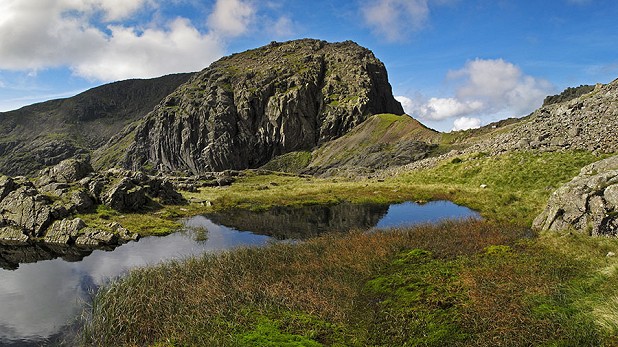
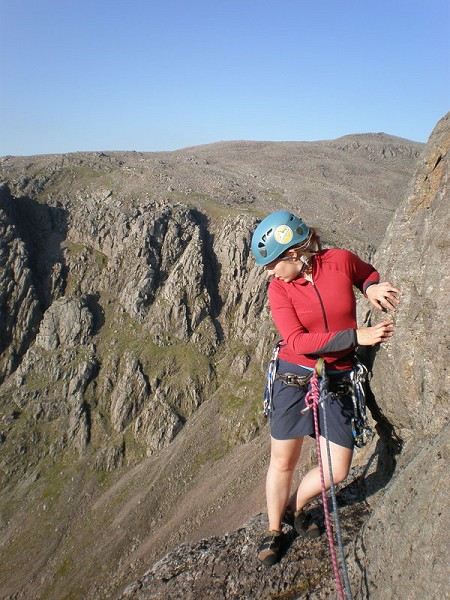
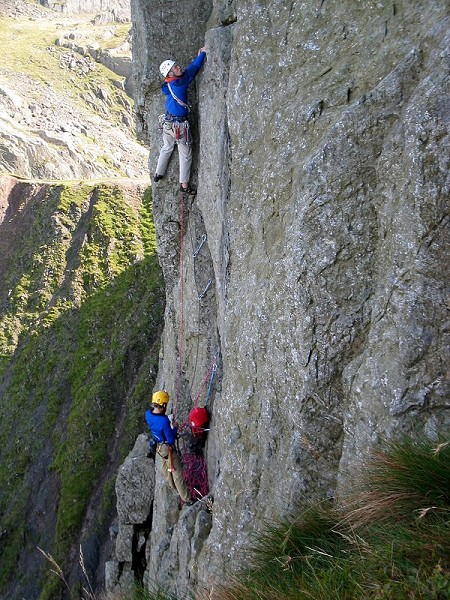




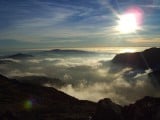




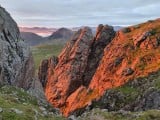




Comments